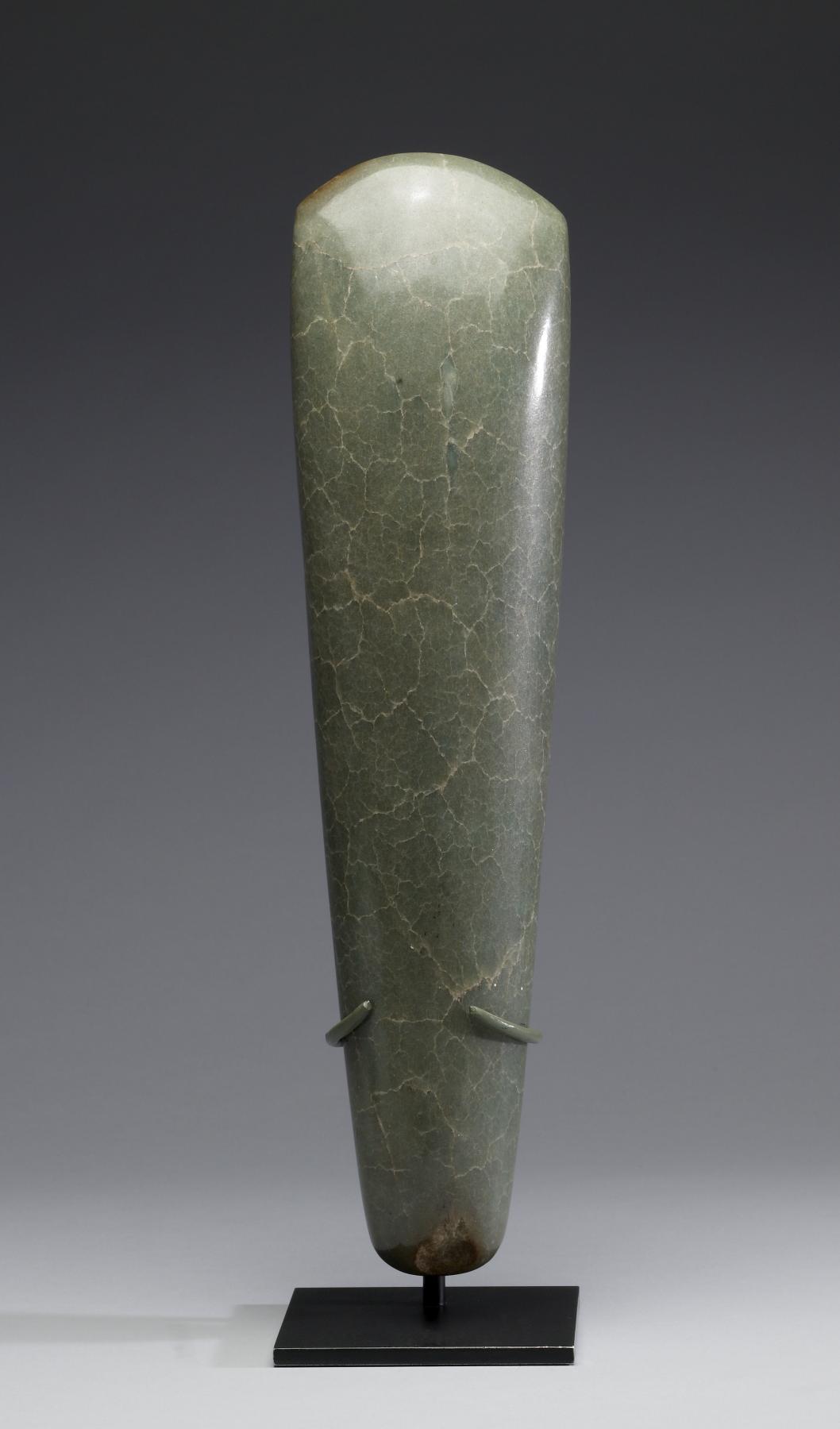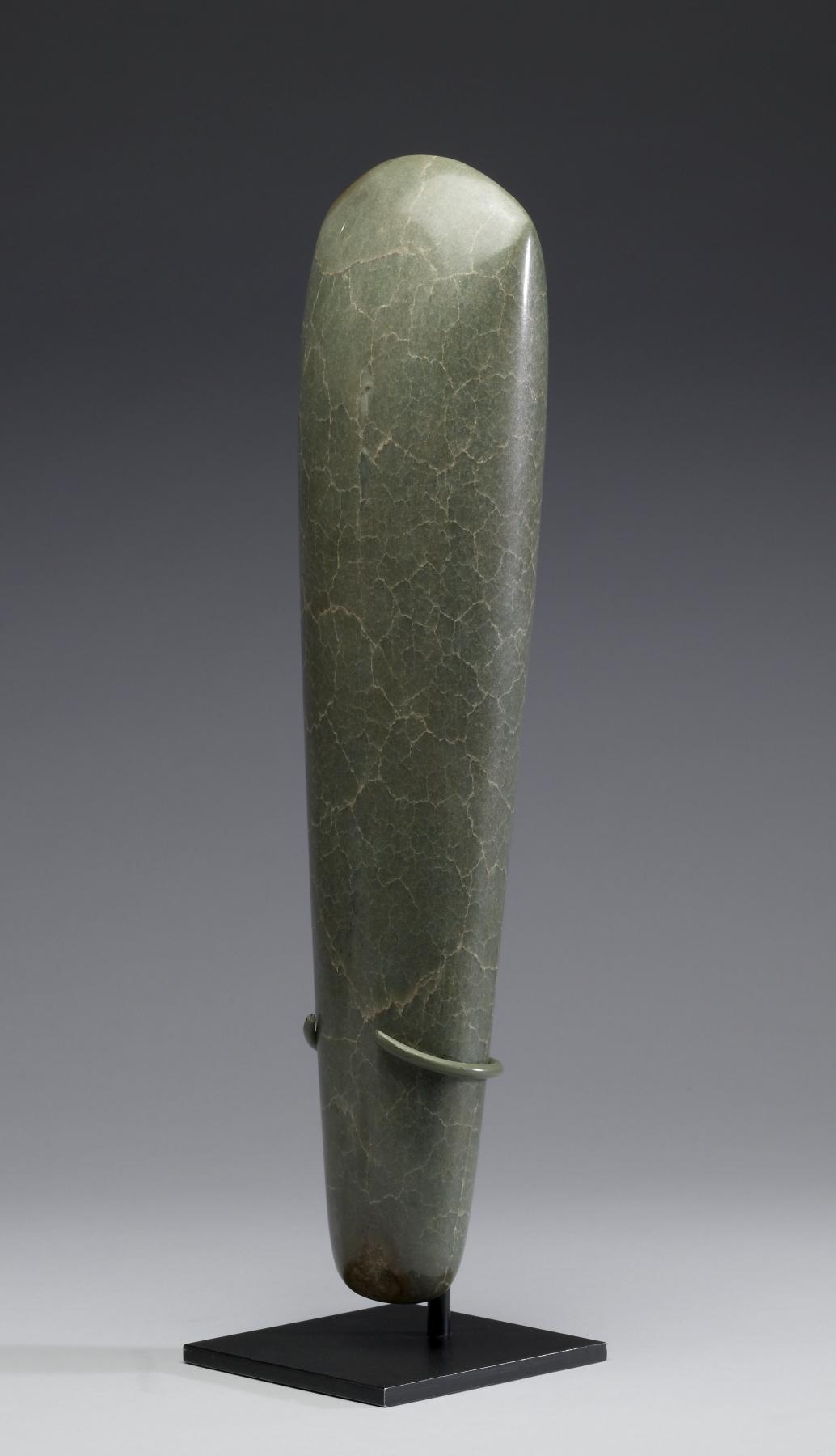Ritual Celt
(Ancient Americas )
Carved in the form of the primary field clearing tool, the chopping celt, this enlarged version made from precious green stone connotes the power of the ruler who wielded it. Its functional reference and its green color imply the ruler's shamanic ability and responsibility to ensure agricultural success. The celt form as a ritual object also alludes to decapitation sacrifices for the gods who controlled nature and the growth of crops. Celts are occasionally found in burials, but most come from ritual deposits placed in pyramids, plazas, and sacred springs. The caches often contain a large number of celts arranged in rows or geometric patterns, and sometimes laid within specially colored clay or sand. Most celts are plain, as is this example, but others are incised with images of Olmec deities such as the maize god. The celt's seedlike shape, green color, and its "planting" in the ground indicate an agricultural ceremonial meaning for these special deposits. The multiple references to fertility, regeneration, and maintenance of the balance of nature would have had powerful connotations for the person wielding the ceremonial celt as an implement of political office.
Provenance
Provenance (from the French provenir, 'to come from/forth') is the chronology of the ownership, custody, or location of a historical object. Learn more about provenance at the Walters.
Throckmorton Fine Art, New York; purchased by John G. Bourne, Sante Fe, April 23 2001; given to John G. Bourne Foundation, 2001; given to Walters Art Museum, 2013.
Exhibitions
| 2012-2013 | Exploring Art of the Ancient Americas: The John Bourne Collection Gift. The Walters Art Museum, Baltimore; Frist Center for the Visual Arts, Nashville. |
Conservation
| Date | Description | Narrative |
|---|---|---|
| 1/1/2011 | Examination | The correct identification of the materials used to create an artwork is valuable because certain materials have specific cultural significance. Most ancient Americas objects made from green stones are made of jade, or more accurately, jadeite. The term “jade” actually refers to two different minerals—jadeite and nephrite. It is very difficult to distinguish them by visual inspection alone; however, no ancient American artworks made of nephrite have ever been found. |
Geographies
Mexico (Place of Origin)
Measurements
H: 15 1/16 x W: 3 3/4 x D: 2 11/16 in. (38.2 x 9.5 x 6.8 cm)
Credit Line
Gift of John G. Bourne Foundation, 2013
Location in Museum
Not on view
Accession Number
In libraries, galleries, museums, and archives, an accession number is a unique identifier assigned to each object in the collection.
In libraries, galleries, museums, and archives, an accession number is a unique identifier assigned to each object in the collection.
2009.20.288




